Best PPC Audit Tools for Amazon & eCommerce Sellers
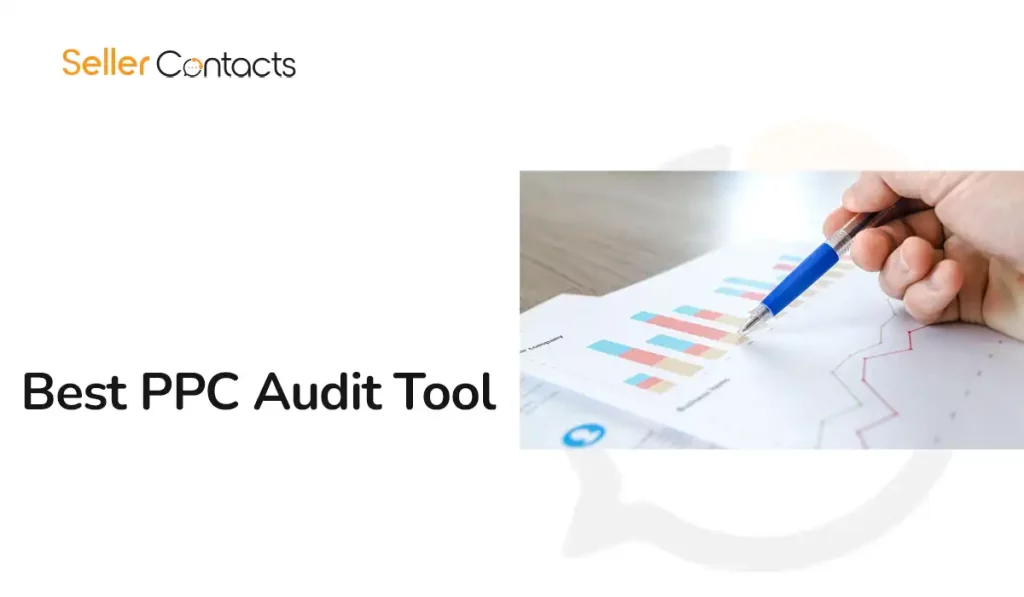
Advertising costs have gone up. That’s not news. But what surprises many Amazon and eCommerce sellers is how often they’re bleeding money—without even realizing it.
You launch a few campaigns. ACOS looks “fine.” Sales are coming in. But under the hood? You might be wasting 30–40% of your ad spend.
That’s where PPC audits come in. A proper audit helps uncover what’s working, what’s wasting spend, and where your growth is stuck. Think of it as a health check for your ad account—done right, it can completely change how profitable your business becomes.
In this article, we’re breaking down the best PPC audit tools available in 2024, how to use them, and where a tool like Seller Contacts fits in to supercharge your strategy.
Let’s dive in.
What Is a PPC Audit—and Why It’s Important?
A PPC audit is more than just glancing at your ACOS or turning off a few underperforming keywords. It’s a structured look into every part of your advertising engine. And for Amazon sellers, especially, it’s essential.
A good audit looks at:
- Keyword performance (not just impressions, but conversion rates)
- Wasted spend (non-converting clicks, irrelevant searches)
- ASIN-level targeting
- Campaign structure and organization
- Ad placement analysis (Top of Search, Rest of Search, Product Pages)
- Bid strategy health
- Conversion attribution accuracy
If you’re only looking at one or two metrics like ACOS or ROAS, you’re not seeing the full picture.
Amazon makes things more complex than platforms like Google Ads. You’re not just bidding on keywords. You’re bidding on placements, ASINs, branded vs non-branded terms, and you’re often fighting black-box algorithms that adjust dynamically.
That’s why relying on the right PPC audit tool matters.
What Should a Good PPC Audit Tool Do?
Not every tool that shows you a dashboard is doing an audit. Real audit tools go deep. They don’t just present data—they help you make sense of it.
Here are the non-negotiables:
- Search term analysis: Know what actual queries are triggering your ads.
- Wasted spend detection: Highlight non-converting clicks and overspending bids.
- Placement and ASIN insights: Where are your ads showing up, and what’s performing?
- Keyword & negative keyword suggestions: Cut the fat and expand what works.
- Historical performance trends: Spot seasonality, campaign decay, or rising stars.
- Data visualizations: Clear, readable graphs or summaries.
- Exportable reports: For internal reviews or sharing with clients or partners.
- Amazon-native functionality: Some tools are built for Google but adapted to Amazon. The best ones understand how Amazon works natively.
Let’s walk through the best tools that do this well.
The Best PPC Audit Tools for Amazon & eCommerce Sellers in 2024
1. AdBadger
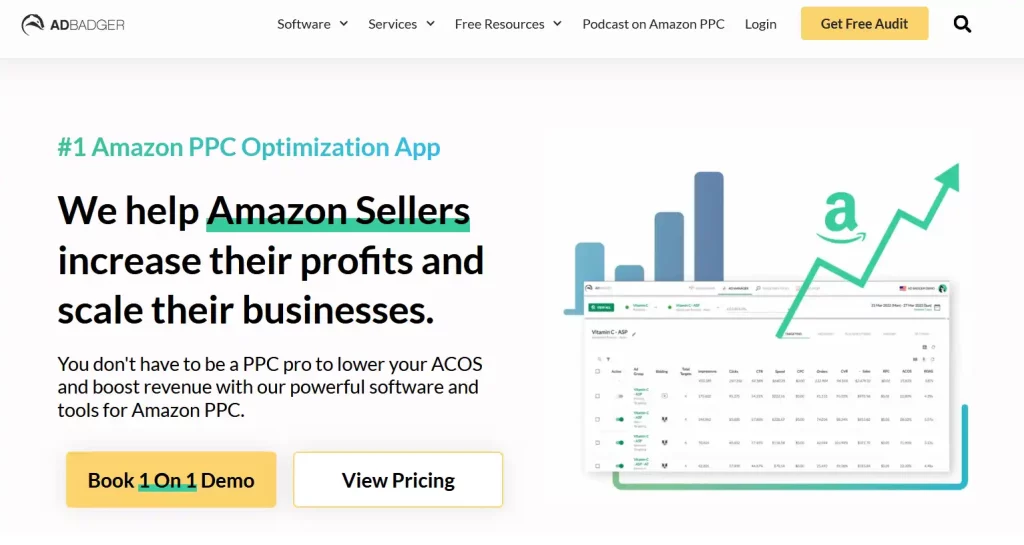
Built specifically for Amazon PPC, AdBadger has become a favorite for sellers who want automation and deep audit insights. Their interface surfaces wasteful keywords, suggests negatives, and even provides visual breakdowns of where your money is going.
What’s unique? The search term heatmaps that show which terms are draining budget over time. Great for spotting trends you’d otherwise miss.
Best for: Medium to large Amazon sellers focused on performance.
2. Perpetua (formerly Sellics Benchmarker)
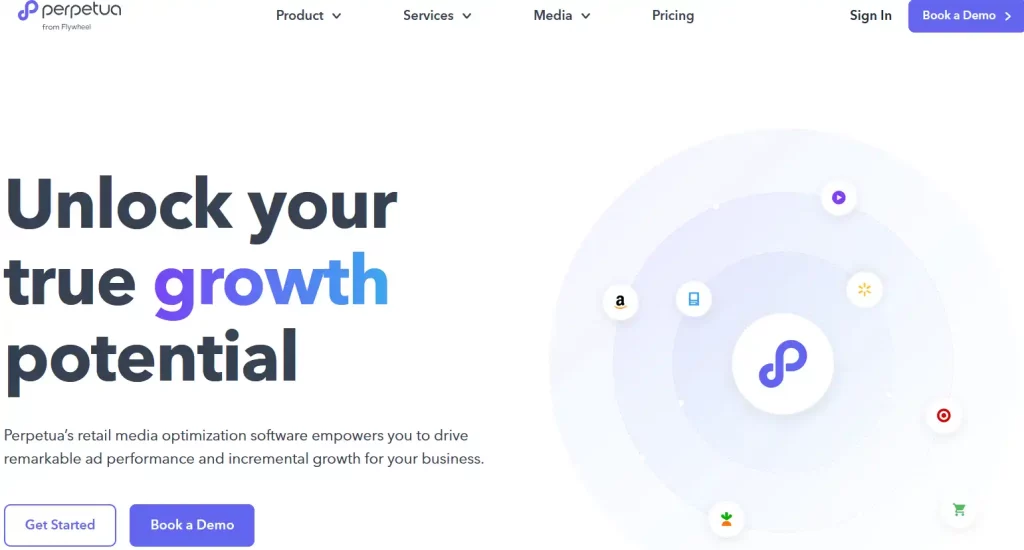
Perpetua’s visual approach makes audits much more digestible. It’s one of the few tools that benchmarks your PPC performance against competitors in your product category.
If you’ve ever wondered whether your 23% ACOS is actually “good” or not—Perpetua will tell you.
It’s not just about your performance. It’s about context.
Best for: Agencies and brands managing multiple accounts or product categories.
3. Helium 10 – Ads Module
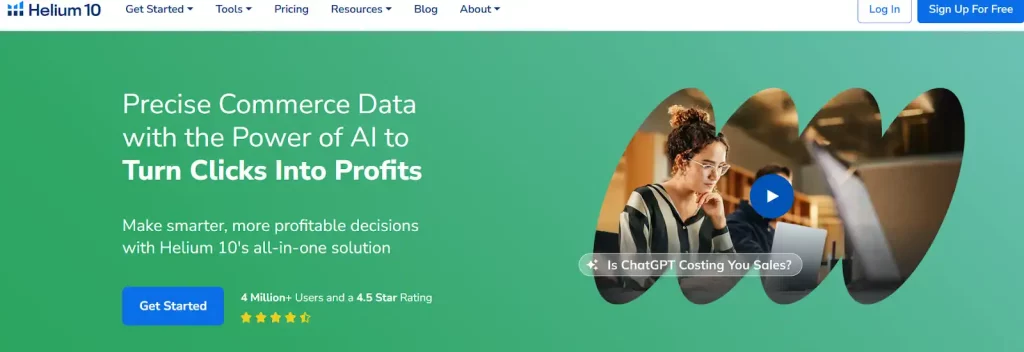
Helium 10 is best known for keyword research, but their Ads module adds serious PPC audit muscle. You get clean visual summaries, negative keyword alerts, and conversion rate breakdowns at both the keyword and ASIN level.
It works especially well if you’re already using Helium10 for product research or listing optimization—everything connects smoothly.
Best for: Sellers using a full-suite Amazon tool with built-in PPC auditing.
4. Teikametrics Flywheel

Flywheel isn’t just an audit tool—it’s a growth engine. It uses AI to adjust bids, recommend structure changes, and flag underperformers. But even if you don’t use the automation, the audit dashboard alone is valuable.
It’s especially strong at showing how inventory status and pricing changes are affecting your ad results.
Best for: High-growth sellers who want real-time adjustments and campaign intelligence.
5. DataHawk
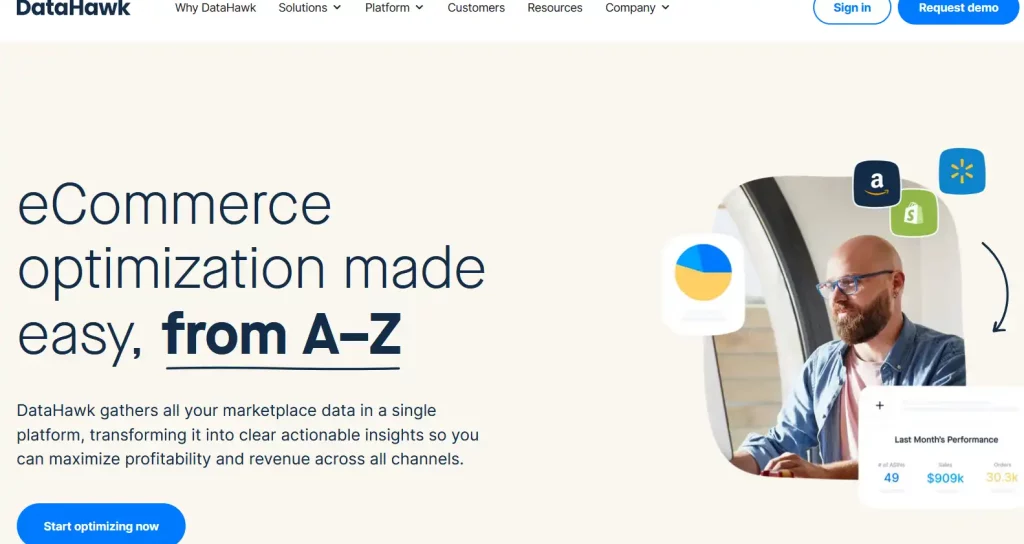
If you sell on both Amazon and Walmart, DataHawk gives you an edge. Their reports aggregate PPC data across marketplaces, letting you audit more broadly.
Their audit features include top-down visualizations of spend, performance trends, and keyword decay, which helps you catch gradual performance declines.
Best for: Multi-channel sellers looking to audit across platforms.
Which Tool Is Right for You?
Here’s a side-by-side look at how the top tools compare:
| Tool | Channel | Audit Depth | Automation | Best Fit |
| AdBadger | Amazon | High | Moderate | Growing Amazon sellers |
| Perpetua | Amazon | Medium | High | Agencies, Brands |
| Helium10 Ads | Amazon | High | Moderate | Helium10 users |
| Flywheel | Amazon | High | High | Scale-focused brands |
| DataHawk | Amazon + Walmart | Medium | Moderate | Multi-channel sellers |
Each tool has its strengths. Your choice depends on how deep you need to go—and how much of your audit process you want to automate.
How Seller Contacts Supercharges Your PPC Audit Strategy
Let’s get one thing clear: Seller Contacts is not a PPC tool. But it’s one of the smartest tools you can use alongside your audits.
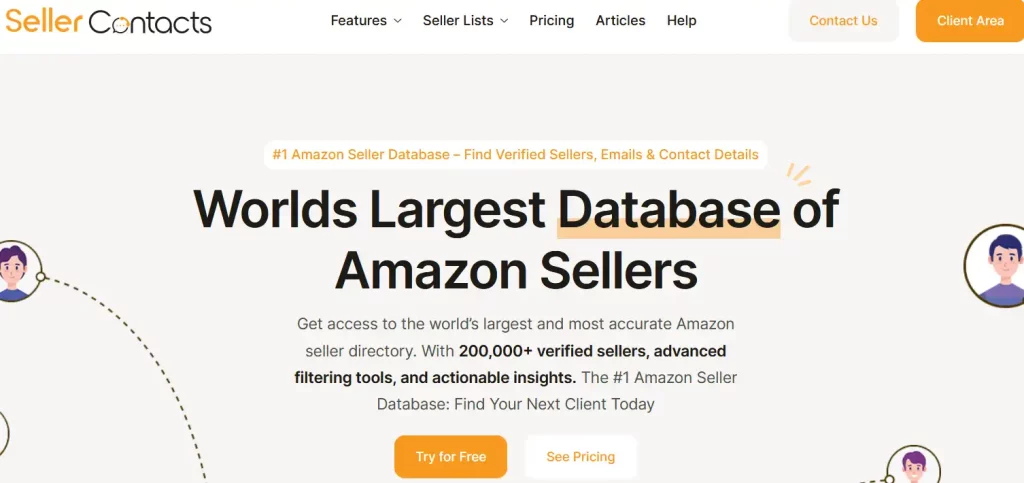
Here’s how it works.
Before you optimize your campaigns, you need to know your market. Which competitors are running aggressive ads? Which ASINs are dominating high-intent search terms? What new sellers are entering your space?
That’s where Seller Contacts steps in.
With its massive database of Amazon sellers, product categories, revenue insights, and geo-location filters, you can:
- Find high-performing competitor ASINs before you audit.
- Uncover keyword gaps by analyzing what your competitors are ranking and advertising for.
- Validate your targeting strategy—see if your audience overlaps with other top sellers.
- Discover new markets or regions to expand ad campaigns.
This isn’t about running a bid report. It’s about auditing your entire competitive landscape so you can audit smarter, not just harder.
For example, say you’re targeting a mid-level keyword in the baby niche. Your audit shows poor ROAS. With Seller Contacts, you find out that five top sellers recently entered the space and are outbidding you across the board. That’s not something your PPC tool alone would reveal.
Together, your audit tool fixes your structure. Seller Contacts helps fix your strategy.
When and How Often Should You Run a PPC Audit?
There’s no perfect one-size-fits-all answer. But here’s the rule of thumb:
- Run a full PPC audit every 30–45 days if you’re actively scaling or running aggressive campaigns.
- For smaller accounts or seasonal products, a quarterly audit might be enough—just don’t let it slip past that.
- Also audit anytime your metrics swing hard—like a sudden spike in ACOS or drop in impressions.
Signs You’re Overdue for a PPC Audit
- You’re spending more but not seeing sales lift.
- Your top-performing campaign starts declining with no explanation.
- ACOS stays flat, but TACOS is climbing (hint: ads aren’t generating real growth).
- You’re unsure which keywords or ASINs are actually driving conversions.
Auditing at the right time saves money. But it also helps you make better, faster decisions—before wasted spend piles up.
How to Run an Effective PPC Audit (Step-by-Step)
Running an audit doesn’t have to be overwhelming. Here’s a breakdown of what to look at, even if you’re using a tool:
1. Start with the Big Picture
Review total ad spend, total sales, ACOS, TACOS, and conversion rates. If TACOS is creeping up month over month, you’re probably becoming over-reliant on ads.
2. Check Campaign Structure
Messy campaign structures are the silent killer. Look for campaigns with overlapping targeting or unclear naming. Segment by product, match type, or intent level.
3. Keyword & Search Term Analysis
Dive into the search term report. Identify:
- High-spend, low-conversion terms
- Terms converting well with low bids (potential to scale)
- Irrelevant or unrelated search terms that need to be negated
If you’re running broad match without tight negatives, you’re likely wasting a lot of spend here.
4. Placement & Device Analysis
Amazon lets you see whether your ads show up on:
- Top of Search
- Rest of Search
- Product Pages
Are you overspending for Top of Search with no returns? Adjust your placement bid modifiers accordingly.
5. ASIN Targeting
In Sponsored Display or Product Targeting campaigns, analyze which ASINs are actually converting. If you’re targeting 200 but only 10 convert consistently, cut the rest.
6. Bid Strategy Evaluation
Look at bid adjustments across auto/manual campaigns. Are your top keywords underfunded? Are you using Dynamic Bids (Down Only, Up and Down) strategically?
Pro Tip: Run audits with a “growth lens”—don’t just cut what’s not working, find what is working and double down.
PPC Audit Questions Sellers Often Ask
What’s the difference between ACOS and TACOS—and which one should I care about?
- ACOS = Ad Spend ÷ Ad Sales
- TACOS = Ad Spend ÷ Total Sales
If your ACOS is low but your TACOS is rising, you’re becoming more reliant on ads to generate sales—probably not sustainable. Always watch both.
Should I pause or lower bids on keywords that aren’t converting?
Not always. First, check your click volume. If you’re only getting 20 clicks and no sales, that’s not enough data. But if it’s 100+ clicks with no conversions, yes, consider pausing or lowering the bid.
Can a PPC audit fix my entire account?
No, but it will show you where to focus. A good audit uncovers blind spots—then you use that data to make smarter, surgical changes.
How do I know if a tool is really helping or just showing me data?
The best tools don’t just give you metrics—they tell you what to do with them. Look for actionable insights, not just colorful charts.
Ready to sharpen your PPC strategy with competitive insights?
Try Seller Contacts today and get access to the world’s largest eCommerce seller database.
Know your competition. Audit smarter. Grow faster.
